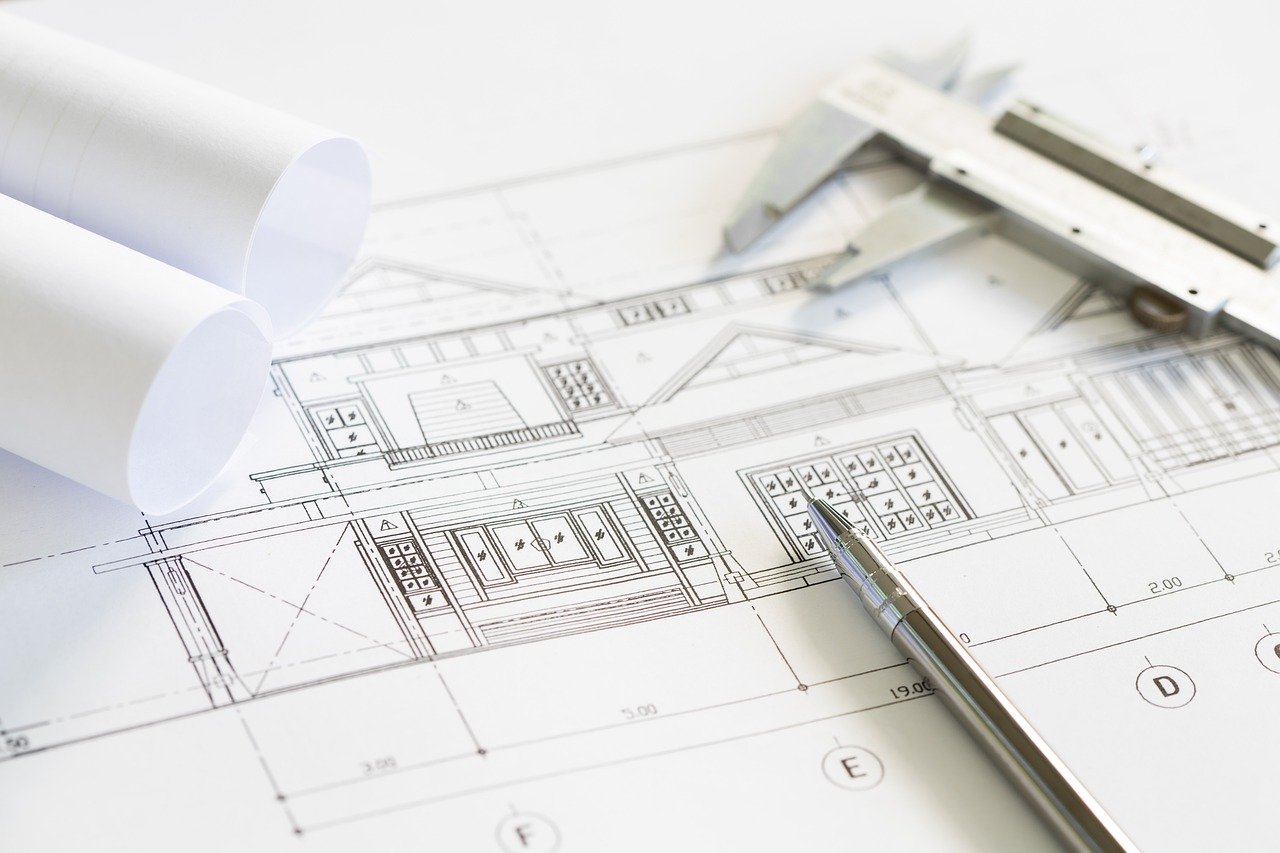Before taking on a building project, it’s critical to have a clear direction of where you’re headed. What will the structure look like? What are the specific needs the building will meet? Which materials will give you the best quality for your structure? What’s the best way to put it all together? That’s why your architectural drawings are important.
But there are quite a few of them. So, going back to the basics today, we’ll be exploring the difference between shop drawings, construction drawings, and as-built drawings. What’s the purpose of each one, and what’s the exact importance? Knowing this will help you effectively optimize your construction documentation efforts.
Ready? Let’s dive in!
Construction Drawings
Construction drawings, also known as working drawings or blueprints, are detailed and precise technical documents used in the construction industry. They provide specific information about how a building or structure should be built.
These drawings serve as a communication tool between the design team and the contractors, ensuring that the project is constructed according to the designer’s intentions. They show how each component of the building should be connected, specifying materials, fixtures, appliances, and equipment to be used.
Here are some key components typically included in construction drawings:
- Floor Plans
- Elevations
- Sections
- Mechanical, Electrical, and Plumbing (MEP) Drawings
- Structural Drawings
- Site Plans
- Schedules
For example, a printed floor plan would show the layout and flow of rooms, the locations of doors and windows, and the placement of major fixtures like sinks and toilets. Here’s an example:

An elevation drawing would show what the house looks like from the front, indicating the height and shape of the roof, the placement of windows, and any architectural details.

Well-created and printed construction drawings are highly detailed to ensure accurate construction. They also play a crucial role in ensuring that the building is constructed to meet safety, regulatory, and design standards.
Shop Drawings
Shop drawings in architecture are detailed, scaled drawings produced by contractors, subcontractors, manufacturers, or fabricators. They provide specific information about how various components of a building or structure will be fabricated, installed, and assembled.
Think of shop drawings as a more detailed development of what you have on the construction drawings. With the help of shop drawings, you will be able to figure out details such as:
- Precise Dimensions: Exact measurements for every component of the framework, including length, width, thickness, and any other relevant dimensions.
- Material Specifications: Details about the type of steel to be used, its grade, and any special treatments or coatings.
- Connection Details: How the different parts of the installations are connected, including welds, bolts, or other fasteners.
- Finish and Coating Information: If the component requires a specific finish or coating (such as paint or galvanization). This would be specified.
- Tolerances: Information on allowable variations in dimensions or angles to ensure the truss fits together properly.
- Assembly Instructions: Step-by-step instructions for how the components should be assembled on-site.
Overall, shop drawings help you determine the type of materials needed for each building component, the dimensions of the installations you intend to use, and the timeline for installation.
For example, the shop drawing below indicates the flooring specifications used for a particular space, indicating the types of flooring finishes to use (in this case, tiles), how they’re to be installed, and the layout applied. It also includes details like flooring dimensions, patterns, and transition details (how the flooring will transition to other surfaces, such as walls, stairs, or doorways).

If you had an architectural drawing of a building’s façade that includes a section where custom-designed aluminum panels are installed. The architectural drawing might show a basic outline of the panels and their placement. A shop drawing for these panels would provide these intricate details:
- Individual panels with precise measurements, including the thickness of the aluminum and the exact dimensions of each panel.
- The type of aluminum alloy and finish to be used.
- How the panels attach to the building, including any brackets, clips, or fasteners.
It may also include information about any special treatments the panels need (like anodizing or powder coating). Creating and printing your shop drawings before construction begins is a prudent way to ensure that your construction team (project managers, designers, engineers, contractors, etc.) can work seamlessly.

⇒ Visit the PrintMyDrawings shop for professional architectural plan printing.
As-Built Drawings
As-built drawings in architecture are a set of drawings that document the actual, physical condition of a building or structure after construction is complete. These drawings are created to reflect any changes, modifications, or deviations from the original construction plans and specifications. They serve as a valuable reference for future maintenance, renovations, or additions to the building.
The final as-built drawings should highlight modifications, field changes, shop drawing changes, design changes and extra work. Here’s how to distinguish an As-built drawing from the initial construction drawing:
- Title block: The title block of an as-built drawing will typically include the phrase “as-built” or “record drawing.” The title block may also include the date on which the drawing was created, which will usually be after the completion of the project.
- Revision marks: As-built drawings may contain some revision marks, such as circles, red lines, or notations, to indicate changes that were made to the initial construction drawings during the construction process.
- Notes: As-built drawings may also include notes to document any changes that were made to the initial construction drawings. These notes may include the date of the change, the reason for the change, and the person who authorized the change.
- Accuracy: As-built drawings are typically more accurate than initial construction drawings, as they reflect the actual conditions of the structure as it was built.
As-built drawings serve as a reference for ongoing maintenance and repairs, helping facility managers and maintenance personnel understand the building’s layout and components. When renovations or additions are planned, as-built drawings provide a starting point for design modifications, ensuring that new elements integrate smoothly with the existing structure.

As-built drawings are important for ensuring that the constructed building complies with building codes and regulations. They provide a record of what was built. Over time, the original construction plans may become outdated or lost. As-built drawings serve as a valuable historical record of the building’s evolution.
While as-built drawings are critical, it’s important to maintain them accurately and keep them up-to-date whenever modifications or renovations occur to ensure their continued usefulness.
Conclusion: What’s the difference between construction drawings, shop drawings, and as-built drawings?
It’s safe to say construction documentation is critical to the success of your building project. They may seem pretty basic, but getting them right is one sure way to ensure that your team is on the same page. In this article, we reviewed some important components of your project documentation—shop drawings, construction drawings, and as-built drawings.
Construction drawings give a detailed plan for your building project, including components, layouts, multiple views of the structure, and construction methods to employ.
Shop drawings go into more detail about the building components— what materials are used to make them, the tolerance level of each component, how they are installed, and how long it takes to install them.
As-built drawings are used to document changes made to the structure— deviations from the initial building plan at each stage of the construction project after completion of the building. These drawings are useful for future maintenance and repair purposes.
Now that this is all laid out, you’re well-equipped to have a smooth construction documentation process. Good luck!
⇒ Before you go, read: 7 Important Things to Know Before Printing Architectural Drawings
Print Quality Construction Drawings on Demand
With PrintMyDrawings, you get crisp, detailed architectural and construction drawings when you need them. We make it easy for you to print exactly what you need, fast and clear.
We print:
- Architectural Design Drawings
- Construction Detail Drawings
- Electrical Drawings
- Engineering Drawings
- Mechanical Drawings
- Business Documents
You also get fast delivery to keep your projects on track. The process is simple: you upload your files, we print, and we deliver to your preferred location. Get started by placing an order below, or request a quote for custom orders.
What Are You Printing Today?
-
Starting at $0.48 $0.48 – $4.80 Add to Cart This product has multiple variants. The options may be chosen on the product page
-
Starting at $0.75 $0.75 – $9.60 Add to Cart This product has multiple variants. The options may be chosen on the product page
-
Starting at $0.36 $0.36 – $1.44 Add to Cart This product has multiple variants. The options may be chosen on the product page
-
Starting at $1.13 $1.13 – $14.40 Add to Cart This product has multiple variants. The options may be chosen on the product page
-
Starting at $2.40 $2.40 – $28.80 Add to Cart This product has multiple variants. The options may be chosen on the product page







